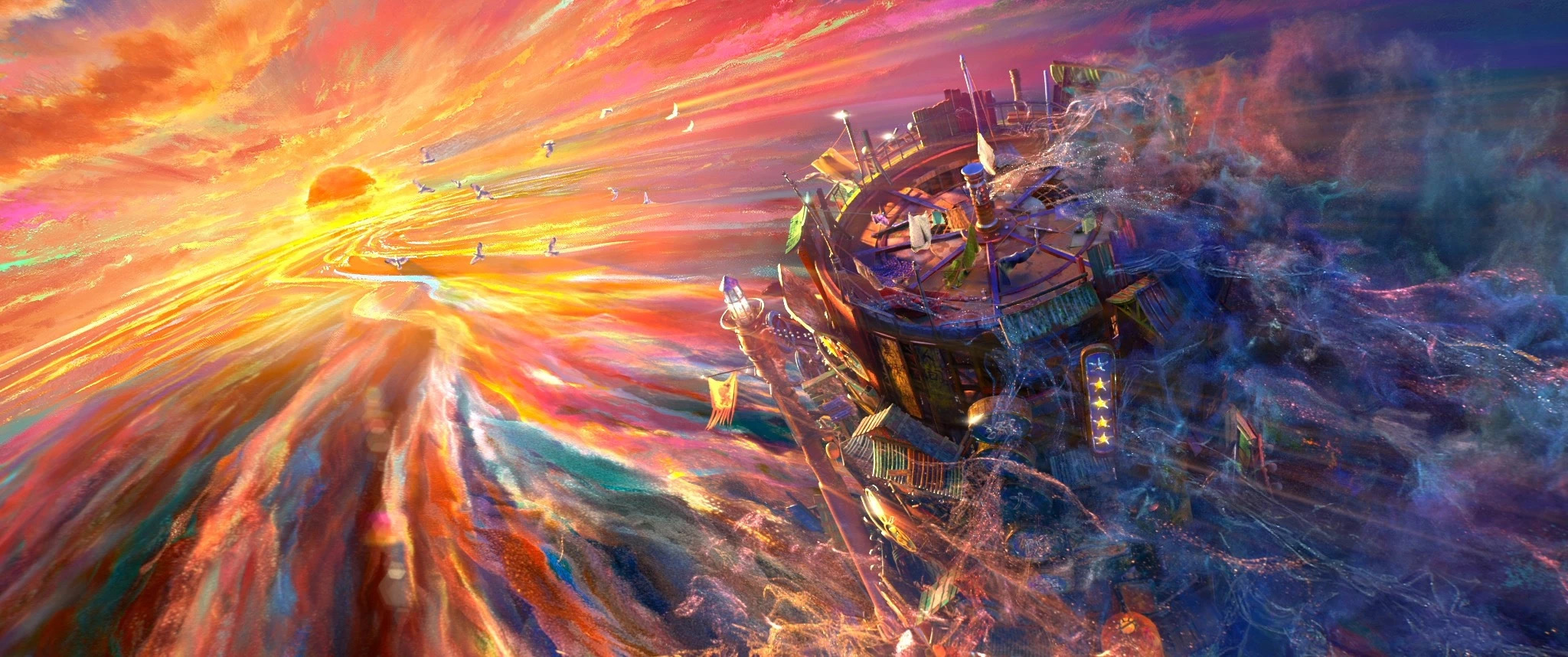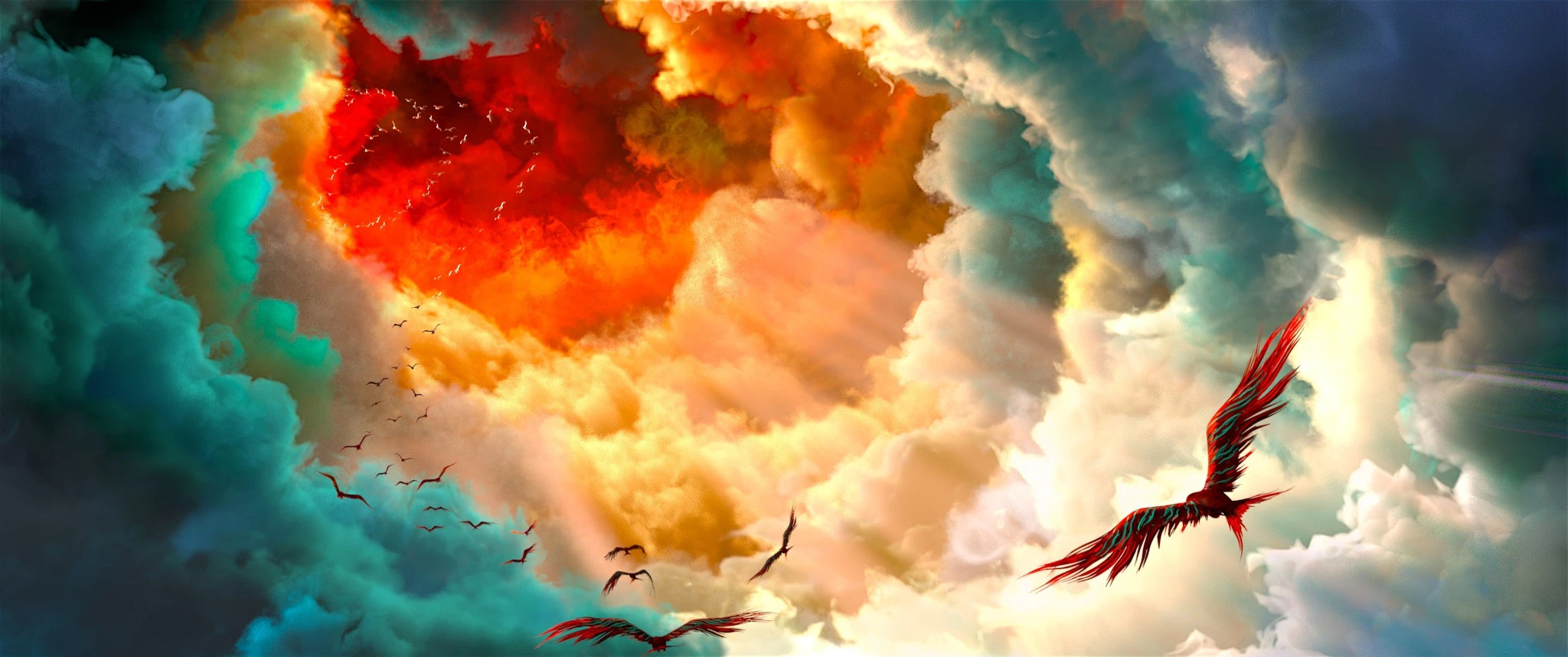Deep Sea Dreams

Imagine the painting Water Lilies by French impressionist Claude Monet slowly unfolding before your eyes.
The water lilies in the pond are in full bloom. Across the shimmering water surface, the reflections of pond-side plants emanate a dreamlike atmosphere. The boundaries of light, water, and air gradually blur. Viewers can only see the trembling strokes and flickering colors, which creates a fantasy setting of a summer night. Then everything in the picture begins to move.
The same fascination inspired by similar abstract impressionism can be found in the original Chinese animated feature Deep Sea, which brought a visual spectacle to China’s big screens.
The success of the animated fantasy was supported by the hard work of 1,478 Chinese animators across seven years.
No Innovation, No Film
Seven years of hard work facilitated the studio’s evolution from producing Monkey King: Hero Is Back to the quality of Deep Sea.
The 2015 film Monkey King: Hero Is Back, inspired by the classical Chinese novel Journey to the West, made director Tian Xiaopeng and executive producer Jin Dayong famous and earned major profits. It was deemed a milestone in the rise of Chinese animation. The production team could have presented a series of sequels using the same intellectual property to continue capitalizing on that success, but they instead refused to repeat and chose a more challenging path to create Deep Sea.
“Director Tian called innovation his only pursuit and the greatest driving force of his directing career,” said Jin. “Even if innovation is accompanied by risk, we still want to try, and we’re not afraid of failure.”
Taking risks proved worth it. Deep Sea was a hit with viewers and critics alike and scored big at the box office. The blockbuster has so far earned around 919 million yuan (US$130 million), placing it among the five highest-grossing Chinese animated films ever. It was also selected to be screened at the Berlin International Film Festival’s youth-focused sidebar Generation selection, the first time that an original Chinese 3D animation was shortlisted for the festival.

Caption
Long Climb to the Top
“Deep Sea is a special project,” said Jin Dayong.
The film tells the unusual story of a little girl grappling with her parents’ divorce and new family. While on a cruise, she falls into the sea and embarks on an amazing underwater journey. The fantasy focuses on digging into the meaning of life.
One unprecedented visual effect stood out in particular as cutting-edge Chinese animation: particle ink painting. It was used to achieve the dazzling and immersive images, showcase the mood and vitality of the protagonist, and hammer home the huge contrast between the brilliance of the dream and the darkness of the real world. Animated films are asset-heavy, requiring a huge investment in technologies comparable to science fiction films. Nowadays, the speed of new technology development has made animation production even more complicated. This is also the reason Deep Sea is so special.
Creating 3D images from traditional abstract Chinese ink paintings and using them throughout the film required abundant time in research and development. Even the crew was uncertain how long it would take. More than two years passed between the emergence of the first concept image and the successful experiment of the technology. However, technological success was only the first step, and a huge amount of work followed. The scene when the sea is split features more than 100 layers of particle effects in one frame, and the particles number up to several billion. The special effect artists entrusted with the single shot cost 15 months to complete.
The production team also devoted unprecedented effort to explore production technology. For example, the team made sure that details as small as a shoulder shaking and chest contracting while the lead female sobs were realistic. Such efforts greatly improve the performance quality.
The final effect is breathtaking. More than two billion particles collide and more than 200 colors converge. The ocean becomes as magnificent and colorful as the morning sky, leaving viewers in a fascinating dream.
After two years of research and seven years of production, Deep Sea finally offered an unprecedented big-screen experience.
Sharing Technologyand Experience
The team never expected the production to last seven years at first. “After my experience on Monkey King: Hero Is Back, I thought three to four years would be ample,” said Jin. “We have come a long way. Although we made some mistakes during the seven years, all the efforts on infrastructure were worthwhile.”
Indeed, Deep Sea already represents an important step for the industrialized future of Chinese animation and an advance of the craftsmanship spirit of Chinese animators.
At the film’s premiere, Tian declared that he was willing to share the technology and experience with his Chinese peers, including teaching particle ink painting and helping standardize procedures. “I hope we can help others in China’s animation industry,” he said. “I hope that one day, Chinese animators will no longer need to worry about technology, so they can devote complete focus to the subject matter of the art and methods of expression.”
Diverse approaches, bold innovation, and selfless sharing are fueling the rise of Chinese animation.